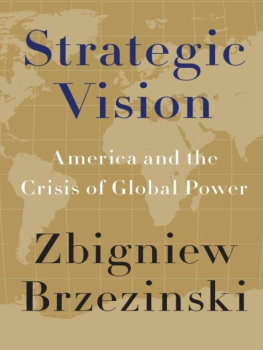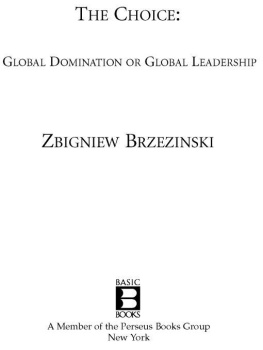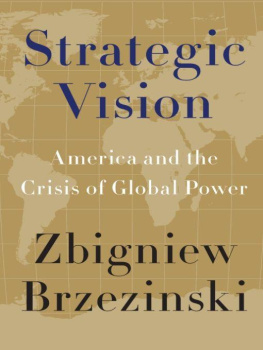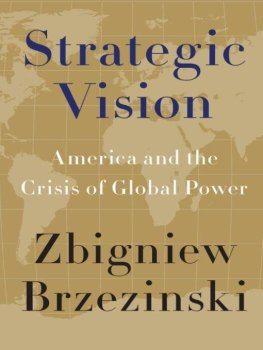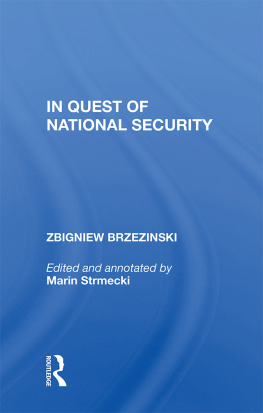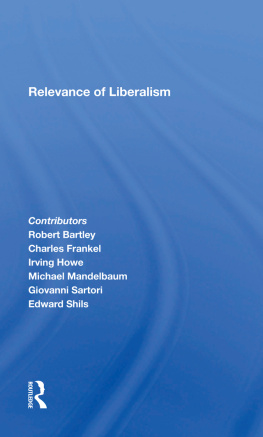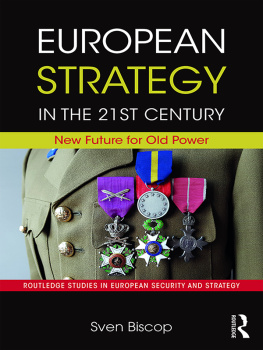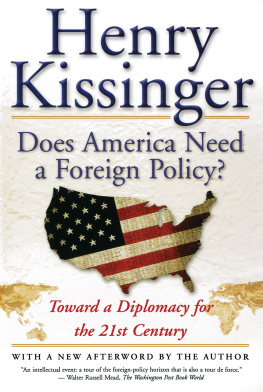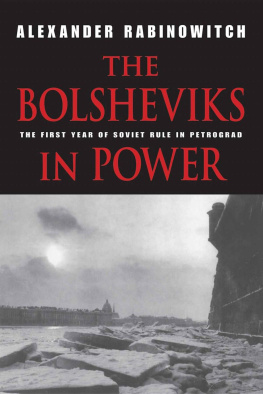Table of Contents
Table of Figures
ALSO BY ZBIGNIEW BRZEZINSKI
America and the World
Second Chance
The Choice
The Geostrategic Triad
The Grand Chessboard
Out of Control
The Grand Failure
In Quest of National Security
Game Plan
Power and Principle
Between Two Ages
Alternative to Partition
The Soviet Bloc
Totalitarian Dictatorship and Autocracy
The Permanent Purge
INTRODUCTION
THE WORLD IS NOW INTERACTIVE AND INTERDEPENDENT. IT IS ALSO, for the first time, a world in which the problems of human survival have begun to overshadow more traditional international conflicts. Unfortunately, the major powers have yet to undertake globally cooperative responses to the new and increasingly grave challenges to human well-beingenvironmental, climatic, socioeconomic, nutritional, or demographic. And without basic geopolitical stability, any effort to achieve the necessary global cooperation will falter.
Indeed, the changing distribution of global power and the new phenomenon of massive political awakening intensify, each in its own way, the volatility of contemporary international relations. As Chinas influence grows and as other emerging powersRussia or India or Brazil for examplecompete with each other for resources, security, and economic advantage, the potential for miscalculation and conflict increases. Accordingly, the United States must seek to shape a broader geopolitical foundation for constructive cooperation in the global arena, while accommodating the rising aspirations of an increasingly restless global population.
With the foregoing in mind, this book seeks to respond to four major questions:
1. What are the implications of the changing distribution of global power from the West to the East, and how is it being affected by the new reality of a politically awakened humanity?
2. Why is Americas global appeal waning, what are the symptoms of Americas domestic and international decline, and how did America waste the unique global opportunity offered by the peaceful end of the Cold War? Conversely, what are Americas recuperative strengths and what geopolitical reorientation is necessary to revitalize Americas world role?
3. What would be the likely geopolitical consequences if America declined from its globally preeminent position, who would be the almost-immediate geopolitical victims of such a decline, what effects would it have on the global-scale problems of the twenty-first century, and could China assume Americas central role in world affairs by 2025?
4. Looking beyond 2025, how should a resurgent America define its long-term geopolitical goals, and how could America, with its traditional European allies, seek to engage Turkey and Russia in order to construct an even larger and more vigorous West? Simultaneously, how could America achieve balance in the East between the need for close cooperation with China and the fact that a constructive American role in Asia should be neither exclusively China-centric nor involve dangerous entanglements in Asian conflicts?
In answering these questions this book will argue that Americas role in the world will continue to be essential in the years to come. Indeed, the ongoing changes in the distribution of global power and mounting global strife make it all the more imperative that America not retreat into an ignorant garrison-state mentality or wallow in self-righteous cultural hedonism. Such an America could cause the geopolitical prospects of an evolving worldin which the center of gravity is shifting from West to Eastto become increasingly grave. The world needs an America that is economically vital, socially appealing, responsibly powerful, strategically deliberate, internationally respected, and historically enlightened in its global engagement with the new East.
How likely is such a globally purposeful America? Today, Americas historical mood is uneasy, and notions of Americas decline as historically inevitable are intellectually fashionable. However, this kind of periodic pessimism is neither novel nor self-fulfilling. Even the belief that the twentieth century was Americas century, which became widespread in the wake of World War II, did not preclude phases of anxiety regarding Americas long-range future.
When the Soviet Union launched Sputnik, its first orbital satellite, during the Eisenhower administration, Americans became concerned about their prospects in both peaceful competition and strategic warfare. And again, when the United States failed to achieve a meaningful victory in Vietnam during the Nixon years, Soviet leaders confidently predicted Americas demise while historically pessimistic American policy makers sought dtente in exchange for the status quo in the divided Europe. But America proved to be more resilient and the Soviet system eventually imploded.
By 1991, following the disintegration both of the Soviet bloc and then the Soviet Union itself, the United States was left standing as the only global superpower. Not only the twentieth but even the twenty-first century then seemed destined to be the American centuries. Both President Bill Clinton and President George W. Bush confidently asserted as much. And academic circles echoed them with bold prognoses that the end of the Cold War meant in effect the end of history insofar as doctrinal debates regarding the relative superiority of competing social systems was concerned. The victory of liberal democracy was proclaimed not only as decisive but also as final. Given that liberal democracy had flowered first in the West, the implied assumption was that henceforth the West would be the defining standard for the world.
However, such super-optimism did not last long. The culture of self-gratification and deregulation that began during the Clinton years and continued under President George W. Bush led to the bursting of one stock market bubble at the turn of the century and a full-scale financial crash less than a decade later. The costly unilateralism of the younger Bush presidency led to a decade of war in the Middle East and the derailment of American foreign policy at large. The financial catastrophe of 2008 nearly precipitated a calamitous economic depression, jolting America and much of the West into a sudden recognition of their systemic vulnerability to unregulated greed. Moreover, in China and other Asian states a perplexing amalgam of economic liberalism and state capitalism demonstrated a surprising capacity for economic growth and technological innovation. This in turn prompted new anxiety about the future of Americas status as the leading world power.
Indeed, there are several alarming similarities between the Soviet Union in the years just prior to its fall and the America of the early twenty-first century. The Soviet Union, with an increasingly gridlocked governmental system incapable of enacting serious policy revisions, in effect bankrupted itself by committing an inordinate percentage of its GNP to a decades-long military rivalry with the United States and exacerbated this problem by taking on the additional costs of a decade-long attempt to conquer Afghanistan. Not surprisingly, it could not afford to sustain its competition with America in cutting-edge technological sectors and thus fell further behind; its economy stumbled and the societys quality of life further deteriorated in comparison to the West; its ruling Communist class became cynically insensitive to widening social disparities while hypocritically masking its own privileged life-style; and finally, in foreign affairs it became increasingly self-isolated, while precipitating a geopolitically damaging hostility with its once-prime Eurasian ally, Communist China.

